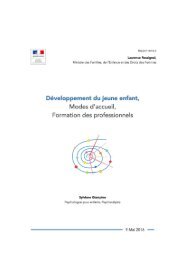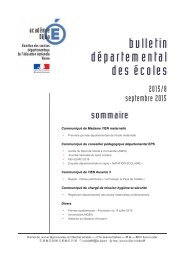agrl_innovations_in_ssa.pdf?utm_content=buffercb41d&utm_medium=social&utm_source=twitter
agrl_innovations_in_ssa.pdf?utm_content=buffercb41d&utm_medium=social&utm_source=twitter
agrl_innovations_in_ssa.pdf?utm_content=buffercb41d&utm_medium=social&utm_source=twitter
You also want an ePaper? Increase the reach of your titles
YUMPU automatically turns print PDFs into web optimized ePapers that Google loves.
• Concerns about high labour requirements and <strong>in</strong>put costs <strong>in</strong>clud<strong>in</strong>g a lack of stak<strong>in</strong>g<br />
materials for climb<strong>in</strong>g beans (sticks are the strongest stakes but are susceptible to termite<br />
damage and have many alternative uses)<br />
• Poor market <strong>in</strong>formation and <strong>in</strong>adequate extension services.<br />
Lessons learned for scal<strong>in</strong>g up. The IPs supported by FARA offer an appropriate means<br />
of <strong>in</strong>tegrat<strong>in</strong>g the concerns of stakeholders and identify<strong>in</strong>g opportunities for value cha<strong>in</strong><br />
improvement at both local and district levels.<br />
Uganda’s dairy <strong>in</strong>dustry<br />
The development of the dairy <strong>in</strong>dustry <strong>in</strong> Uganda<br />
contrasts with that of Kenya’s dairy <strong>in</strong>dustry <strong>in</strong> that<br />
organised milk market<strong>in</strong>g and process<strong>in</strong>g only began<br />
<strong>in</strong> Uganda dur<strong>in</strong>g the 1960s, considerably later<br />
than <strong>in</strong> Kenya. It grew until the unfortunate civil<br />
crisis of the 1970s. However, the support of many<br />
stakeholders over the past two decades has allowed<br />
the <strong>in</strong>dustry’s recovery from near collapse. The<br />
Dairy Master Plan of 1993 opened avenues for new<br />
development, which <strong>in</strong>volved a key policy change<br />
from controlled to liberalised markets that encouraged <strong>in</strong>creased production. Today,<br />
production, consumption, process<strong>in</strong>g, trad<strong>in</strong>g and related services are on the <strong>in</strong>crease,<br />
although a number of challenges rema<strong>in</strong> the opportunity for expansion exists.<br />
Initial context. Despite shar<strong>in</strong>g a common colonial experience with Kenya, Uganda did not start<br />
commercial milk production until the late 1950s. Organised milk market<strong>in</strong>g and process<strong>in</strong>g <strong>in</strong><br />
Uganda began <strong>in</strong> the 1960s, with imports of fresh milk from Kenya (DDA, 2009). Dur<strong>in</strong>g this<br />
period the Government expanded the number of high-yield<strong>in</strong>g cattle through imports ma<strong>in</strong>ly<br />
from Kenya but also from Europe, USA and Canada and by us<strong>in</strong>g local cross<strong>in</strong>g to build disease<br />
resistance <strong>in</strong>to herds. As a result production expanded and milk imports from Kenya fell steadily<br />
dur<strong>in</strong>g the 1960s. Although the country already had an organised milk collection and distribution<br />
system developed by a private company, Uganda Milk Process<strong>in</strong>g Limited, <strong>in</strong> 1967 Government<br />
sought to further the develop<strong>in</strong>g dairy <strong>in</strong>dustry by establish<strong>in</strong>g a legal monopoly, a new parastatal,<br />
the Dairy Corporation (DC), by Act of Parliament. The Act charged the new corporation with<br />
responsibilities similar to those of the Kenya Cooperative Creameries <strong>in</strong> Kenya (KCC), <strong>in</strong>clud<strong>in</strong>g<br />
the regulation of production, market<strong>in</strong>g, pric<strong>in</strong>g, process<strong>in</strong>g, manufactur<strong>in</strong>g and distribution<br />
of f<strong>in</strong>ished dairy products. By 1972 DC had established some 90 milk-collection centres across<br />
Uganda’s major produc<strong>in</strong>g areas. However growth <strong>in</strong> the dairy <strong>in</strong>dustry collapsed dur<strong>in</strong>g the civil<br />
crisis that ravaged the country form 1971 to 1986. Dairy production suffered from rustl<strong>in</strong>g, a<br />
decl<strong>in</strong>e <strong>in</strong> veter<strong>in</strong>ary disease control and resurgence of animal trypanosomiasis. Public research<br />
and extension and market<strong>in</strong>g also collapsed, forc<strong>in</strong>g farmers <strong>in</strong>to subsistence farm<strong>in</strong>g.<br />
40 Agricultural Innovation <strong>in</strong> Sub-Saharan Africa






